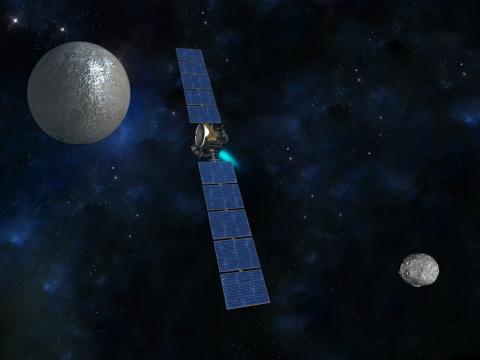Nearly everyone uses the Internet these days, but soon, even more people will want to be online. Much of the world’s population live in rural or hard to access areas. How will these people find Internet service providers nearby? There are a some other options:
- Fiber optic – Laying down additional cable is a hassle. Companies must worry about where they’re digging, what’s underneath them, who owns the land and other issues. However, the upside of this is that fiber technology offers some of the fastest Internet speeds available.
- Cable – Cable has many of the same issues as fiber optic, but with slower speeds.
- Satellites – One of the biggest concerns with satellite Internet is the time it takes for data to reach orbit then be sent back down to Earth, which is called latency. Sending data over the long distances between Earth and geosynchronous orbit takes time, however in the future perhaps not all Internet satellites will be that far away.
Low Earth Orbit
Since 2015, Elon Musk’s company SpaceX has had plans to launch Internet-providing satellites into low Earth orbit. Low Earth Orbit (LEO) is prime satellite real estate for several reasons.
- Satellites in low Earth orbit (between 99 and 1200 miles from the surface of the Earth) have a much stronger connection with the surface than satellites in other orbits, at the cost of a reduced area of service. SpaceX intends to counteract this by launching 4425 satellites into orbit between the years 2019 and 2024 and they plan to begin testing this year.
- Less effort is needed to travel to LEO than some of the higher orbits, however, it does take more speed to sustain such an orbit.
- Satellites closer to the surface have reduced latency compared to satellites in geosynchronous orbit which can be up to 200 times farther away, greatly reducing the transmission speed of data.
Sending thousands of satellites up into orbit is a costly endeavor (historically satellites have cost anywhere between $50 and $400 million per launch). SpaceX is attempting to reduce the cost of their launches (and through their launches, their Internet service) in a several ways. They are making their satellites smaller to cut down on material and launch costs and all the satellites will be launched with the company’s own Falcon 9 rockets.
SpaceX Projections
SpaceX projects that their satellites will support up to 10% of the Internet traffic in highly-populated cities and up to 50% of backhaul communications traffic, like the link between LANs (local area networks) and the overarching network. This may not seem like much, but it would help reduce latency in densely populated areas and combat some of the infrastructure strain caused by additional users.
The overall goal of the project is to help meet the growing demand for affordable global Internet. The number of Internet users is projected to reach 5 billion by the year 2020, nearly 3 times as many users as in 2010 and nearly 14 times as many as in 2000. Providing Internet connections to all these users is going to be a chore, and SpaceX intends to do its part to make that easier.
- By Talbryn Porter

